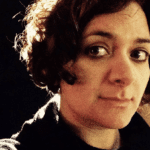When Cynthia Kuk went through a rough patch following a breakup with their college girlfriend, they sought support from a student mental health provider at their small Christian college in western Michigan. The experience was far from therapeutic. “My school counsellor was not ready for me to not be straight,” Kuk says. “She just pretty much tried to steer the conversation as far away from [my relationship] as possible.”
Now a second-year medical student at Michigan State University, Kuk recently signed a petition created by Rodrigo Muñoz and other members of the Medical Student Pride Alliance, a national U.S. organization that advocates for LGBTQ2 medical students. The petition asks that the Electronic Residency Application Service (ERAS)—the centralized online application service that medical students use to apply to the American training programs post-med school—add optional sexual orientation and gender identity fields. Like many other medical students, Kuk plans to “apply out” to residency, notifying prospective graduate medical training programs that they identify as queer. Kuk says the choice has to do with both patients’ and their own well-being, “I don’t want to go to a place where I have to pretend to be somebody who I’m not just to play along.”
Health care providers have long struggled with whether to openly identify as LGBTQ2 on the job. Even GLMA: Health Professionals Advancing LGBTQ Equality, an organization that advocates for LGBTQ2 patients and professionals, had a different, more circumspect name in its early days. Scott Nass, the organization’s president, says it was founded as the American Association of Physicians for Human Rights—encoded language that was chosen, he says, to avoid outing those who joined. Many providers cite their concern for making patients uncomfortable as their primary reason for remaining closeted. But with social acceptance of queerness on the rise—and increasing awareness of the harms that health care discrimination inflicts on LGBTQ2 patients—health care providers are increasingly choosing to work out of the closet.
Feeling distanced or discriminated against in health care settings is extraordinarily common for American LGBTQ2 patients. In a 2017 survey by the Center for American Progress (CAP), six to nine percent of LGBQ respondents and 21 to 29 percent of transgender respondents reported experiencing harsh or abusive language, non-recognition of family members, unwanted physical contact or outright refusal of care at the hands of providers, and federal legislation that permits discrimination is only worsening matters. As a result, many LGBTQ2 patients avoid health care altogether: In a separate CAP survey, 18 percent of queer people who had experienced discrimination in the past year avoided doctor’s offices. In these cases, discrimination causes harm by reducing opportunities to receive preventive and curative health care, leading to increased risk of mental illness, substance abuse, cardiovascular disease, some cancers and other health problems. For example, some queer women have trouble getting tested for STIs and cervical cancer because doctors don’t believe that they are engaging in “genuine sexual relations.”
Increasing the number of visibly LGBTQ2 doctors is one way to make the healthcare spaces more welcoming. “We are working to make the healthcare system affirming for LGBTQ+ people,” says Jessica Halem, LGBTQ outreach and engagement director at Harvard Medical School. “We believe that finding a provider who happens to themselves be LGBTQ is our best line of defence in a system where it’s hard to find anyone who’s been trained properly.” (GLMA maintains a directory of LGBTQ2 and allied health care providers, and Rainbow Health has a directory of providers across Ontario.)
To the queer patients Kuk sees, it’s not enough for doctors to merely be queer-accepting—they need to be queer-informed. “[LGBTQ2 patients] want people who actually know how to take care of the queer population,” Kuk says. Basically, medical provider’s outness guarantees neither that level of skill nor automatic chemistry with every patient.
But having an LGBTQ2 doctor often allows patients to relax enough to take the first step of seeking care, Halem says, with the understanding the doctor will likely be more open to admitting—and improving on—any knowledge deficits related to LGBTQ2 care. “It might not be perfect. We might not know when a lesbian needs a pap smear,” she says, “but I can’t even get halfway to that [conversation] if I’m not in the room with a healthcare provider.”
The benefits to providers of being professionally out vary substantially depending on the cultural and social contexts of their workplace. A series of reports on LGBTQ2 workplace issues from the Human Rights Campain suggests that while nearly half of workers feel compelled to stay closeted on the job, openness is slowly increasing. And where LGBTQ2-supportive policies are implemented, openness about being openly queer in the workplace has been associated with positive outcomes, including increased job satisfaction, improved relationships with coworkers and supervisors, greater commitment to the work and increased productivity.
“People who are out in the workplace are more successful in climbing the career ladder, end of story, period,” Halem says. That includes careers in medicine. She attributes the success of many openly LGBTQ2 medical professionals to the authenticity and confidence that outness conveys.
While that might be true for people working at institutions that value diversity of sexual orientation and gender identity, “Folks in the heartland and in many other places around the United States are not in as good a position to be able to live their authentic lives,” says Scott Nass. Providers themselves say outness does not uniformly predict professional success: Among LGBTQ2 health care professionals responding to a 2015-16 survey, 41 percent acknowledged being out had caused problems in the workplace, including delayed or refused promotion or tenure, harassment and loss of patients.
Rodrigo Muñoz, now a fourth-year medical student at the University of Alabama, says it’s exactly that type of workplace discrimination he and his colleagues hope the ERAS petition will help future LGBTQ2 trainees avoid. He says that if an administration is uncomfortable with having LGBTQ people around them out, the sexuality or gender identity minority field will ensure queer students don’t match with them.
Muñoz says the petition asks to make the fields optional specifically to avoid forcing anyone to self-identify.
Nass compares the optional sexual or gender identity minority field to one he remembers from Facebook’s early days, when users could indicate whether they liked men or women. “Or you could leave it blank,” he says. “If you left that blank, people knew what you really meant.” Nass fears a move by ERAS to add the optional fields would likewise inadvertently out people who would rather keep their sexual orientation or gender identity private.
Nass may soon find out if he is right: The American common medical school application added similar optional fields several years ago, and Halem says it’s a “no-brainer” that, as the common residency application, ERAS should follow suit. “Allowing people to self-identify as a part of a marginalized population, one that is giving them their community, their loved ones and their family, is an absolute must,” she says.


 Why you can trust Xtra
Why you can trust Xtra


